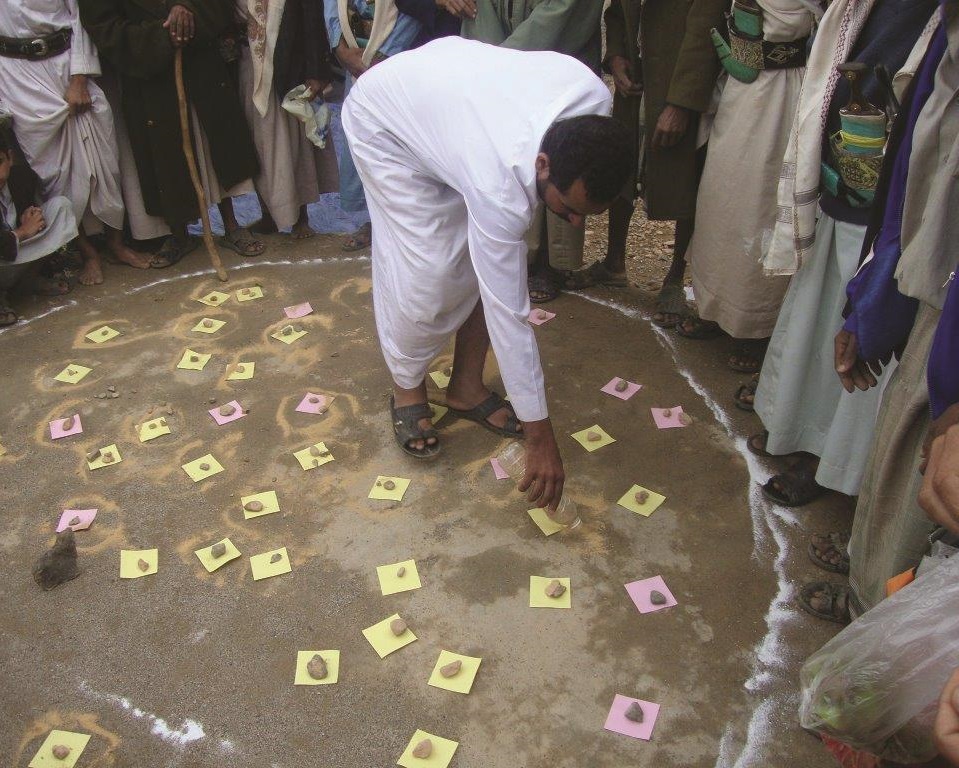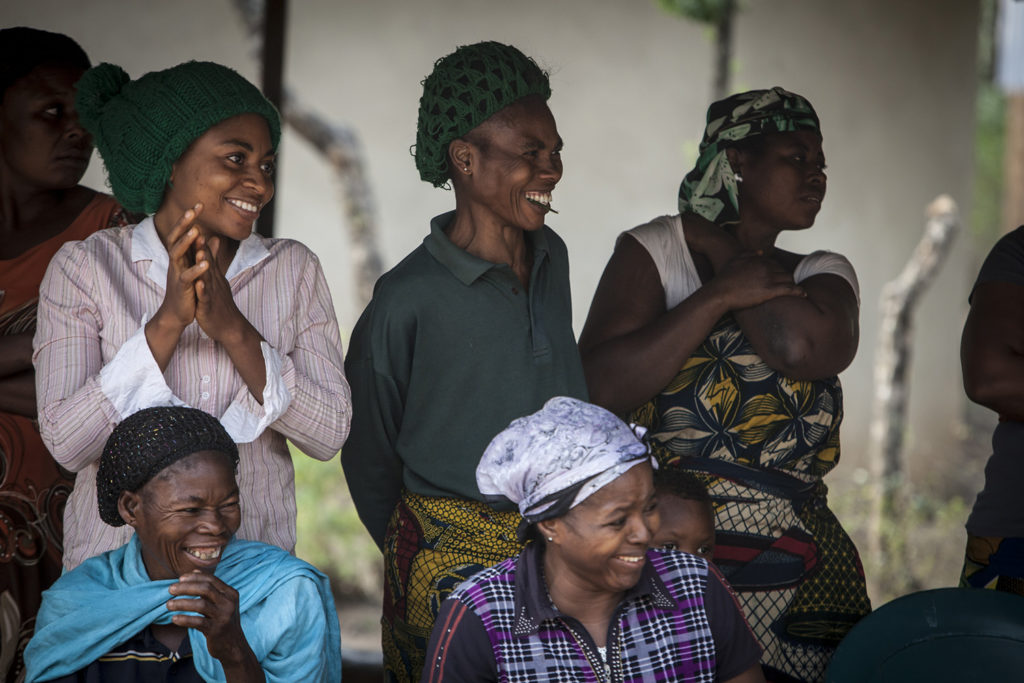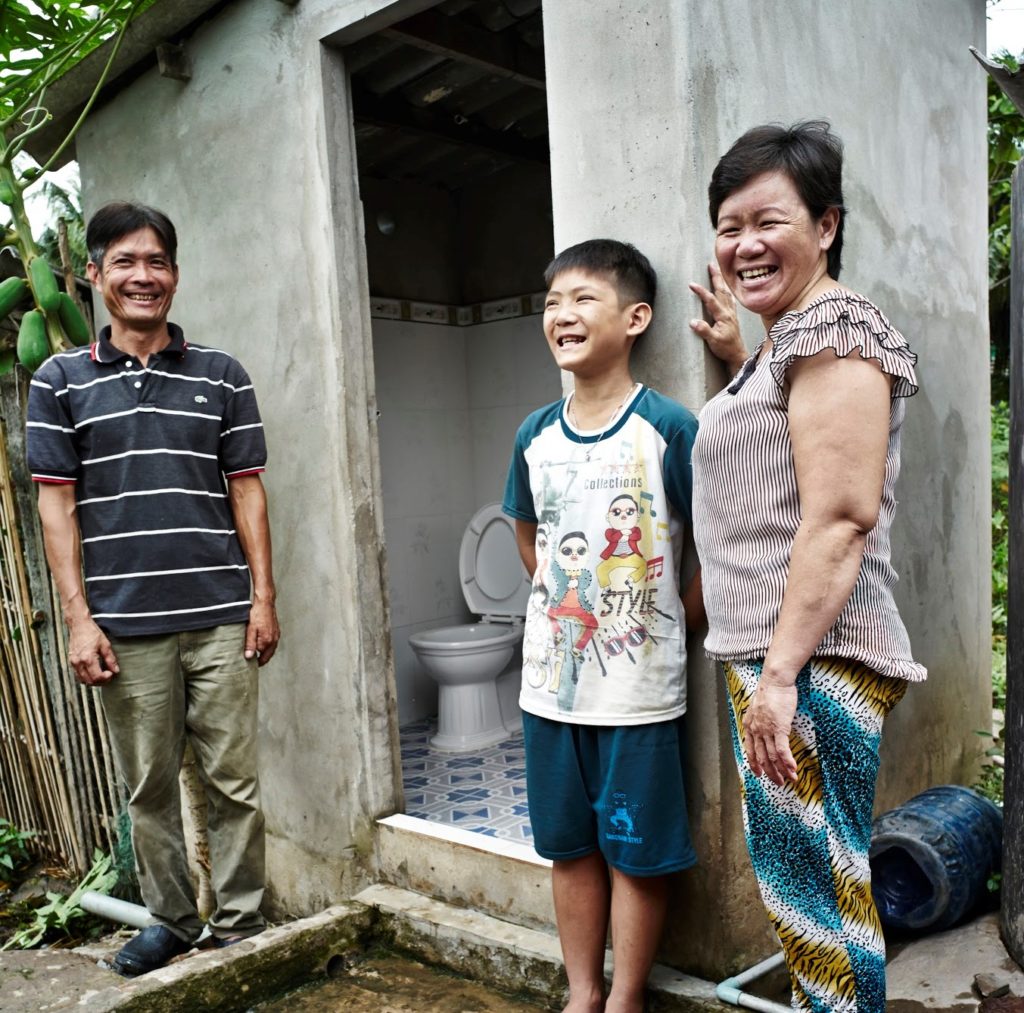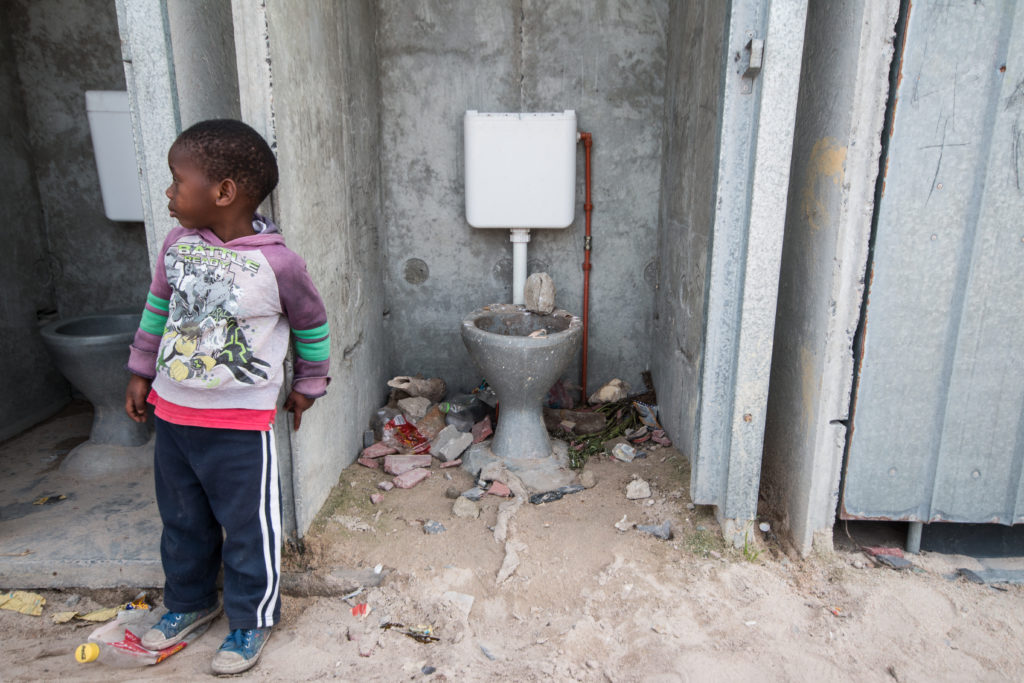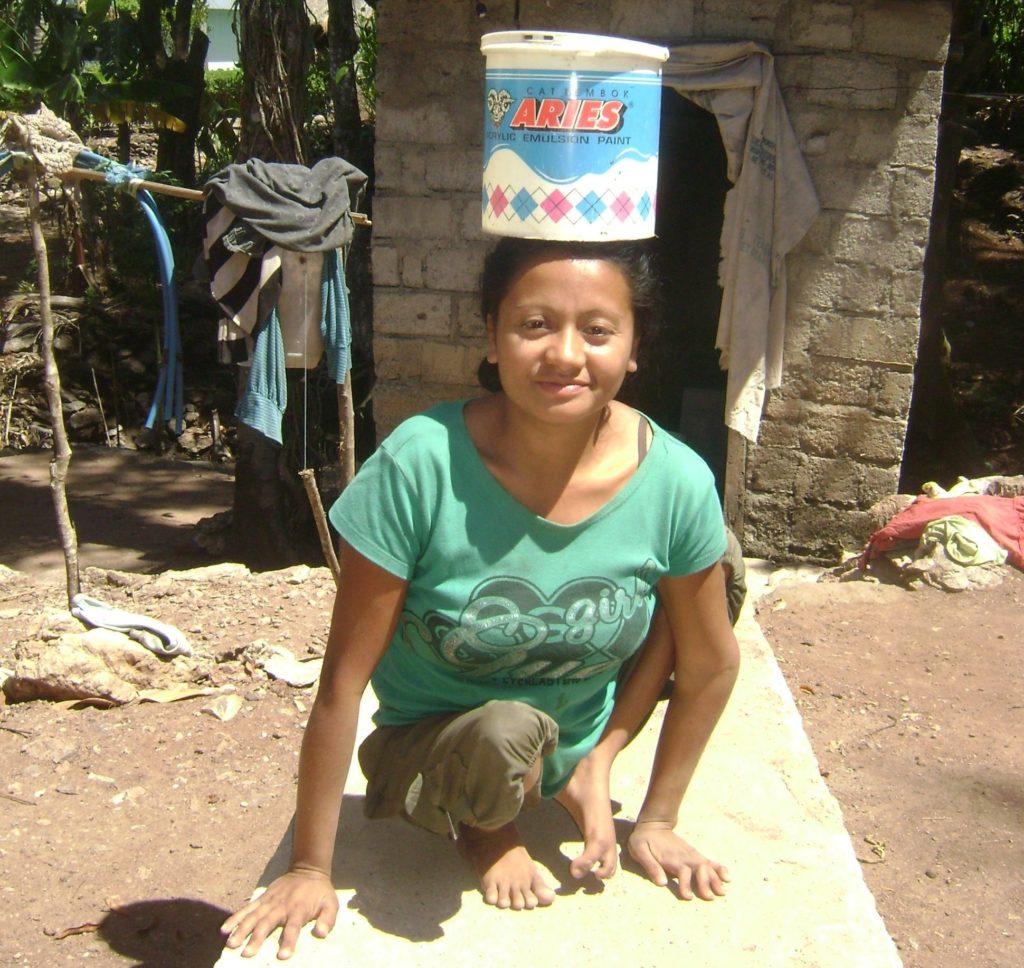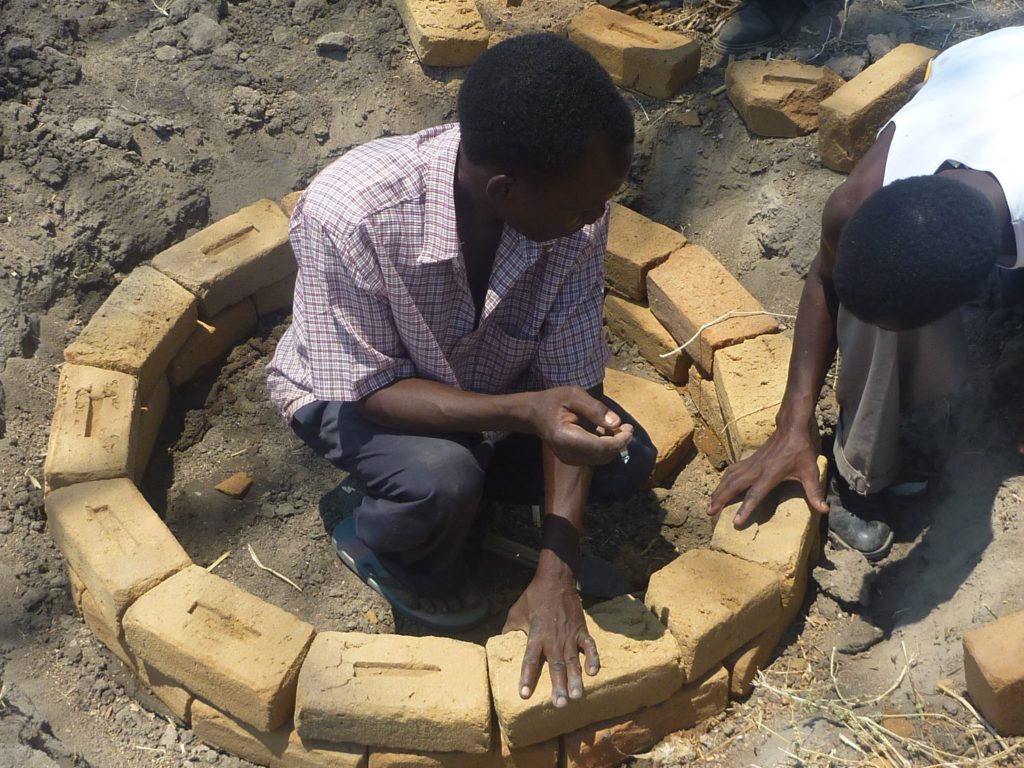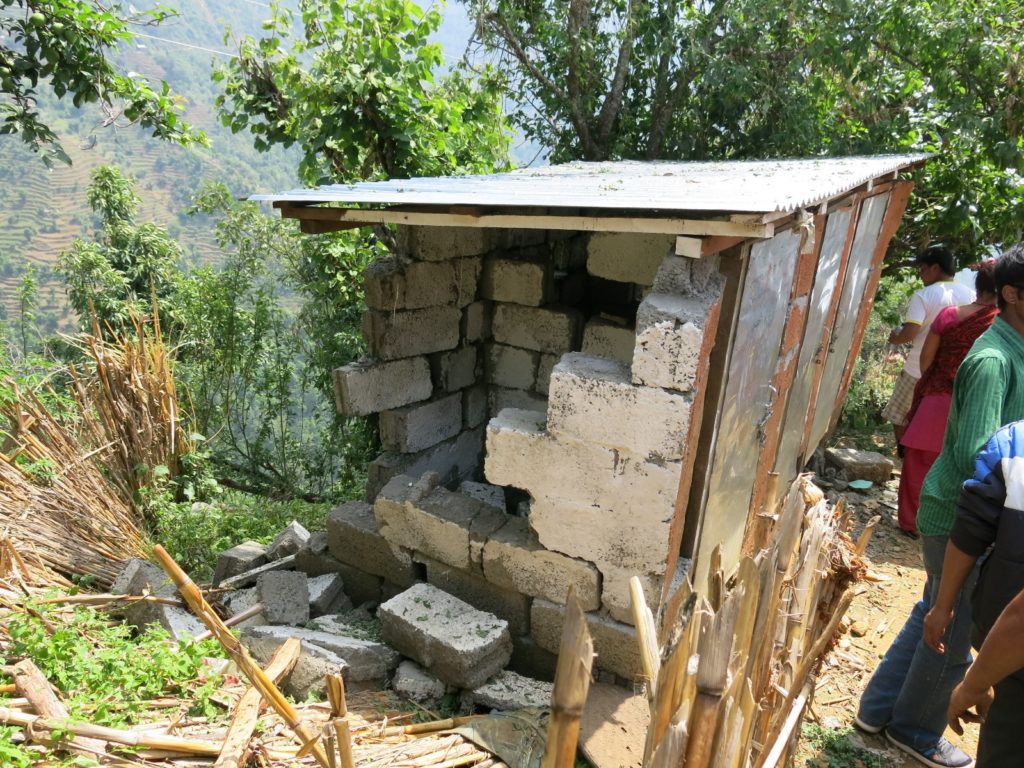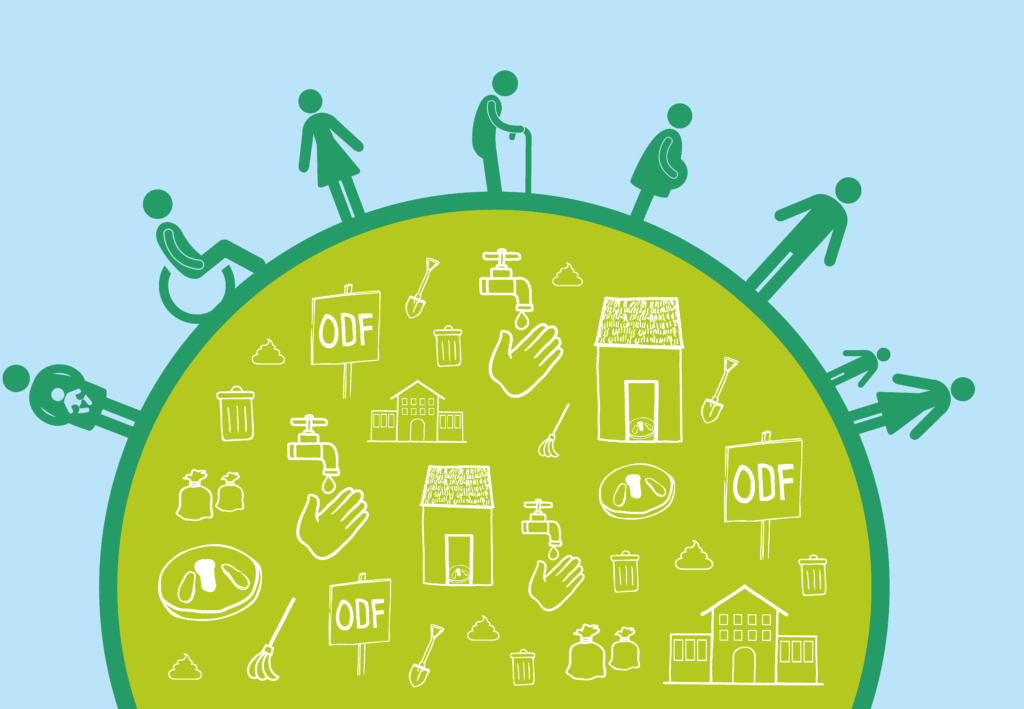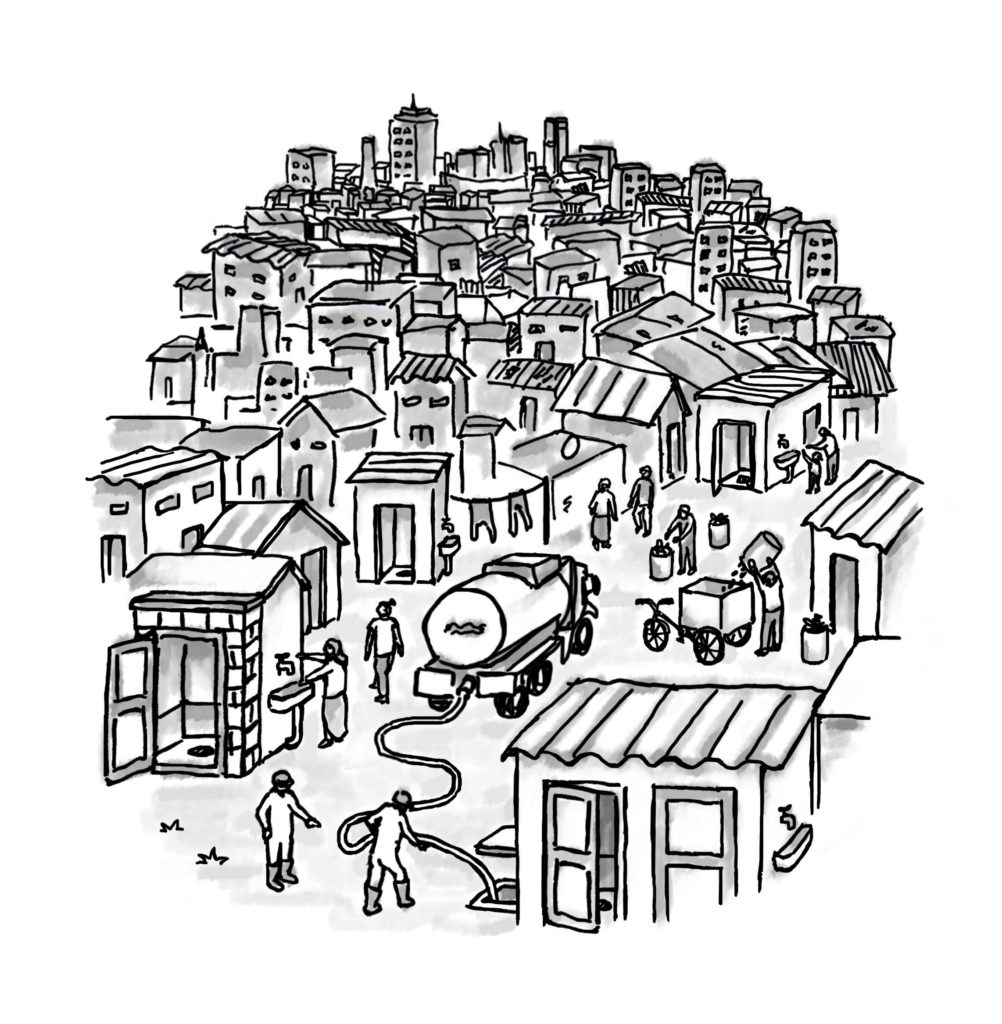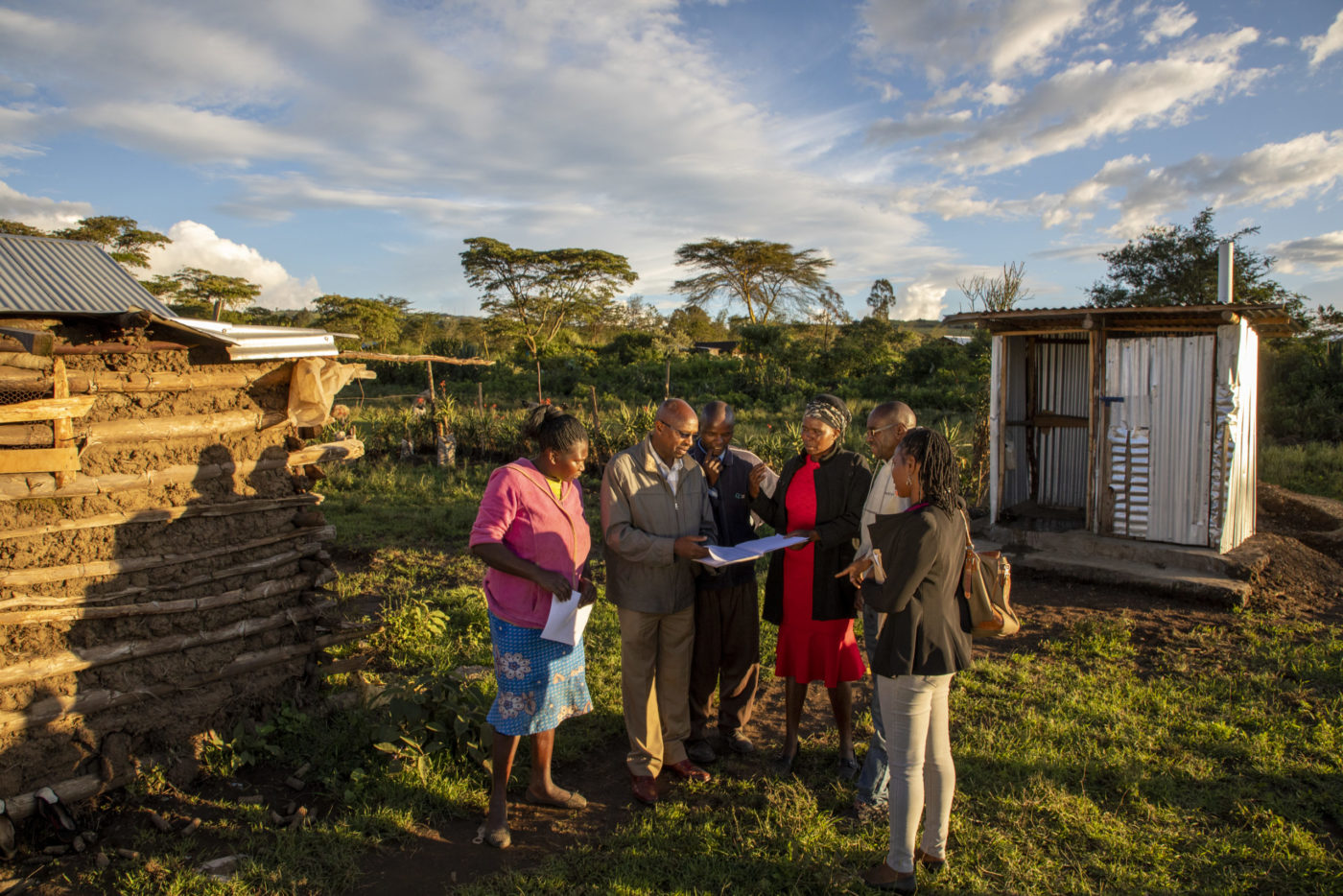The Community-Led Total Sanitation (CLTS) approach facilitates communities to conduct their own appraisal and analysis of open defecation, mobilising people to identify and find solutions to their sanitation and hygiene needs. CLTS encourages people to take action to improve their situation by utilising local knowledge, technology and innovation.
Aims
At the heart of CLTS lies the recognition that merely providing toilets does not guarantee their use, nor result in improved sanitation and hygiene. Earlier approaches to sanitation prescribed high initial standards and offered subsidies as an incentive. But this often led to uneven adoption, problems with long-term sustainability and only partial use. It also created a culture of dependence on subsidies. Open defecation and the cycle of faecal–oral contamination continued to spread disease.
In contrast, CLTS focuses on the behavioural change needed to ensure real and sustainable improvements – investing in community mobilisation instead of hardware, and shifting the focus from toilet construction for individual households to the creation of open defecation-free villages, raising awareness that even if a minority of people continues to defecate in the open everyone is at risk of disease.
Method
CLTS uses participatory methodologies and processes, including community mapping and transect walks, to facilitate communities to analyse their own sanitation practices and faecal-oral pathways. During this process (called triggering) communities are triggered into taking actions to become open defecation free (ODF) through demonstrations that highlight faecal-oral pathways and people coming to the realisations they are eating each other’s shit. CLTS triggers the community’s desire for collective change, propels people into action and encourages innovation, mutual support and appropriate local solutions, thus leading to greater ownership and sustainability.
Adaptations
After initially being conceived as an approach for rural sanitation only, there have been a variety of adaptations, for example in urban and peri-urban settings, in schools and in post emergency and fragile state contexts.
Limitations
The water, sanitation and hygiene (WASH) landscape has been changing subtly but noticeably over a number of years. CLTS has proved most effective to date in tackling the sanitation challenge at scale, becoming more and more accepted, integrated into national policies, and used in a wide variety of contexts by a multitude of actors. However, with the Sustainable Development Goals’ (SDGs) focus on universal coverage and reaching the poorest and most vulnerable, the complexity of the challenges facing the WASH sector and with it, CLTS, have become clear. The SDGs challenge us to examine who is not being reached by current efforts to increase access to sanitation.
Criticisms of CLTS
- People can get left behind or forced into action: CLTS has been found to be most effective in villages that are small, remote, cohesive and have strong local leadership. As CLTS has been adopted into national strategies, pressure to deliver results within set timescales has increased. This has highlighted the challenges associated with balancing a community-led approach with externally driven agendas and has drawn attention to the risk of undue pressure being placed on potentially vulnerable community members to build and use latrines to meet targets.
- Misconception that CLTS is a cheap approach: As no subsidies are offered with CLTS it has been thought of as a cheap approach, however in practice it requires substantial investment in staff time and training. The approach requires frequent time working with communities including for pre-triggering, triggering, post-triggering and post-ODF activities. It is also increasingly accepted that there are contexts in which external support such as subsidies are necessary for people to gain access to safe and appropriate sanitation.
Updating CLTS
There are several practical resources which give suggestions for how issues such as gender, disability, equity, social inclusion, and sustainability can be integrated into CLTS programming.
We suggest that you read these resources alongside the CLTS handbook to ensure that your sanitation programming is inclusive and does not harm.
- Equality and Non-Discrimination (EQND) in Sanitation Programmes at Scale (Part 1 of 2)
- Support Mechanisms to Strengthen Equality and Non-Discrimination (EQND) in Rural Sanitation (Part 2 of 2)
- CLTS and the Right to Sanitation
- Disability: Making CLTS Fully Inclusive
- Engaging Men and Boys for Gender-Transformative WASH
- Incontinence: We Need to Talk About Leaks
- Tackling Slippage
- CLTS in Post-Emergency and Fragile States Settings
- Monitoring and Evaluation for Rural Sanitation and Hygiene: Guidelines




